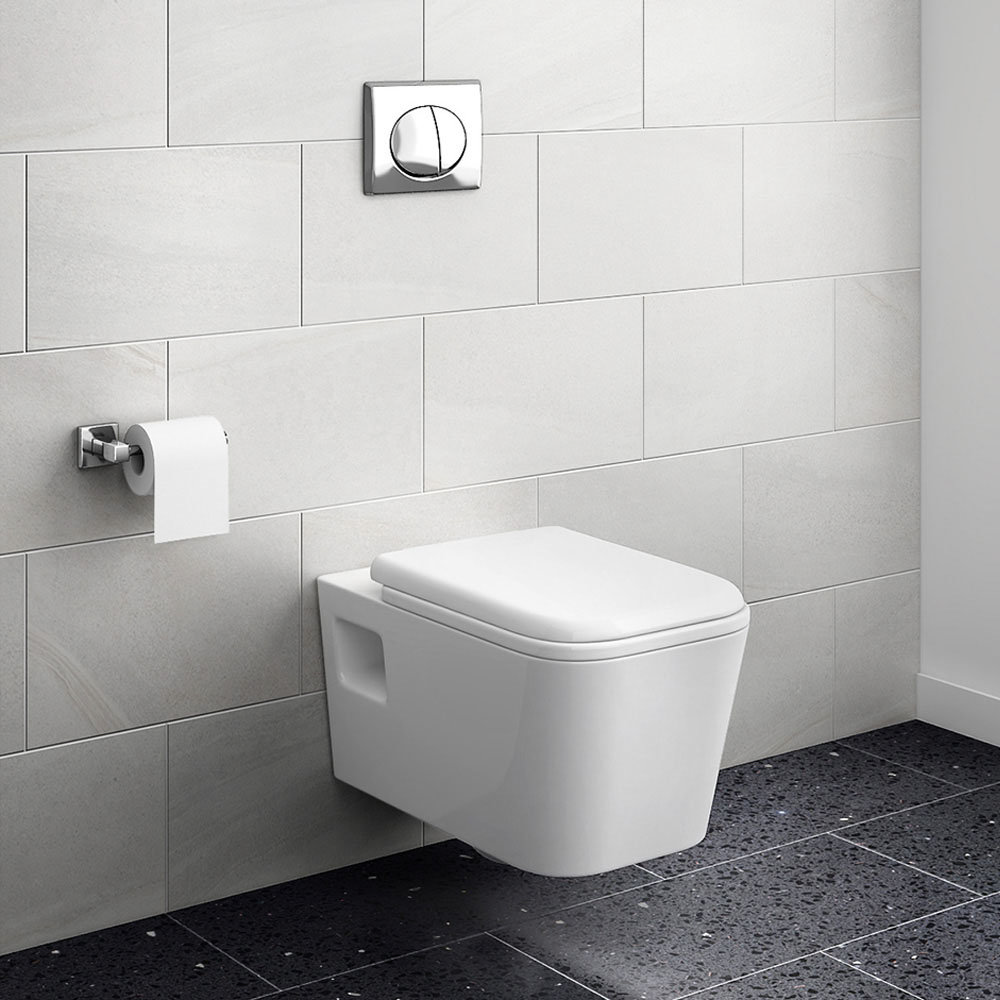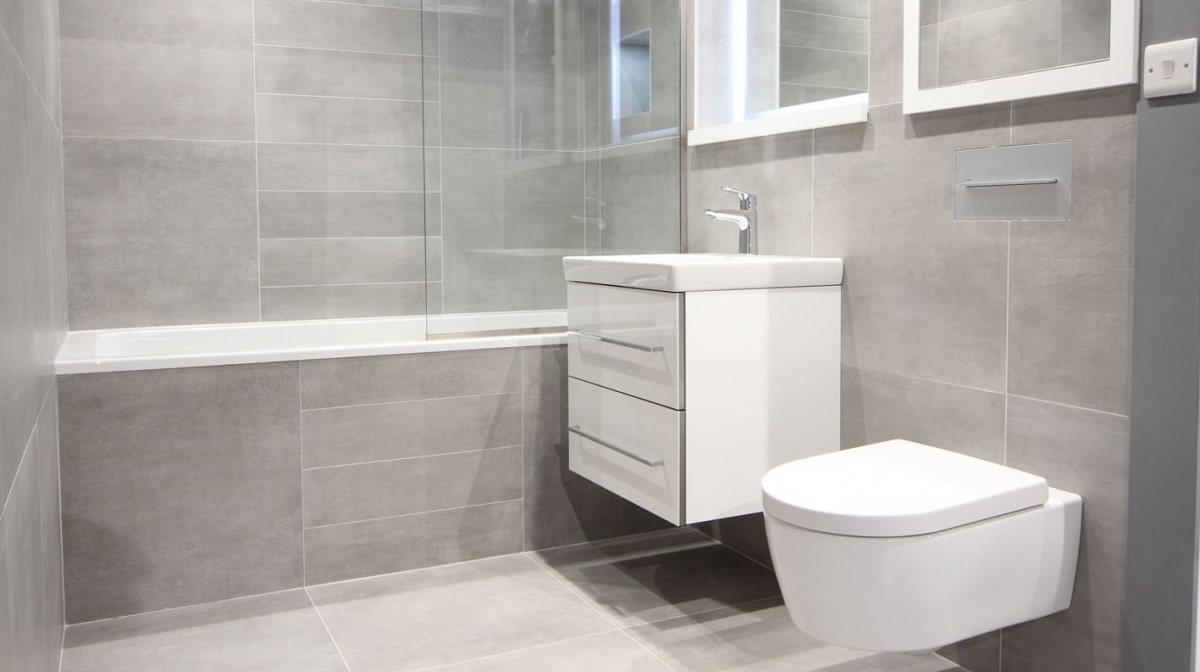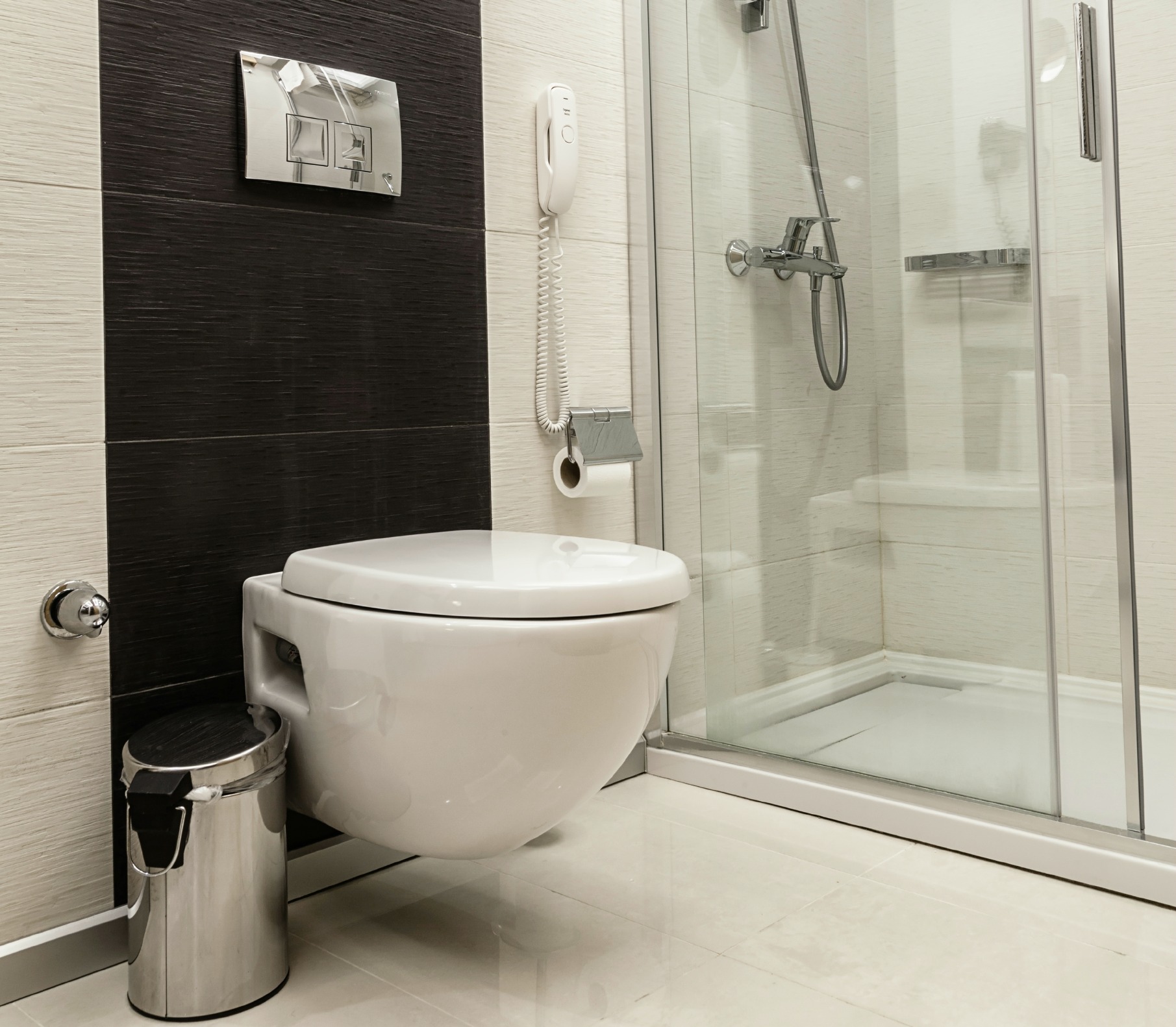Concealing the Toilet for Aesthetics: Hide Toilet In Bathroom

Integrating the toilet seamlessly into a bathroom’s design is crucial for achieving a visually appealing and cohesive space. While functionality is essential, the toilet’s aesthetic impact can significantly influence the overall bathroom ambiance.
Concealing the Toilet with Cabinetry, Hide toilet in bathroom
Cabinetry offers a practical and visually appealing solution for concealing the toilet. This method involves enclosing the toilet within custom-built cabinets that blend seamlessly with the surrounding bathroom design. The cabinetry can be tailored to match the existing bathroom style, whether traditional, modern, or minimalist.
- Traditional Style: Cabinets in rich wood tones with ornate details and decorative hardware can create a classic and elegant look.
- Modern Style: Sleek, minimalist cabinets in neutral colors with clean lines and contemporary hardware complement a modern bathroom aesthetic.
- Minimalist Style: Simple, uncluttered cabinets in light colors or white with integrated handles create a clean and spacious feel.
Concealing the Toilet with Walls
Building a wall around the toilet is a more permanent solution that offers complete concealment and creates a distinct separation between the toilet and the rest of the bathroom. This method is ideal for achieving a clean and uncluttered look, particularly in smaller bathrooms.
- Full Wall Enclosure: A wall built around the entire toilet, extending from floor to ceiling, provides complete concealment and a seamless integration into the bathroom design.
- Partial Wall Enclosure: A wall that partially encloses the toilet, such as a half-wall or a wall with a cutout for the toilet seat, can create a more open and airy feel while still offering some concealment.
Concealing the Toilet with Partitions
Partitions offer a versatile option for concealing the toilet while maintaining an open and airy feel. These partitions can be made from various materials, including glass, wood, or metal, and can be designed in different styles to complement the bathroom’s aesthetic.
- Glass Partitions: Glass partitions provide a modern and sleek look while allowing natural light to pass through, creating a sense of openness.
- Wood Partitions: Wood partitions offer a warm and natural aesthetic and can be stained or painted to match the bathroom’s color scheme.
- Metal Partitions: Metal partitions create a contemporary and industrial look and can be used to create a unique focal point in the bathroom.
Comparison of Concealment Methods
| Method | Pros | Cons |
|---|---|---|
| Cabinetry | Versatile, customizable, relatively affordable | May require more space, can be more difficult to clean |
| Walls | Provides complete concealment, creates a clean look | More permanent solution, can be more expensive |
| Partitions | Offers flexibility and visual appeal, can be customized | May not provide complete concealment, can be more expensive |
Maximizing Space and Functionality

Hiding the toilet can transform a bathroom from a cramped, cluttered space into a haven of functionality and visual appeal. By cleverly concealing this essential fixture, you can create a more spacious and efficient bathroom layout, particularly beneficial in smaller homes.
Benefits of Concealed Toilets in Small Bathrooms
Concealed toilets offer a multitude of advantages for small bathrooms, enhancing both the visual and functional aspects of the space.
- Increased Floor Space: By integrating the toilet into the wall or a custom cabinet, you free up valuable floor space, creating a more spacious and airy feel.
- Sense of Openness: A concealed toilet eliminates the visual bulk of a traditional toilet, contributing to a sense of openness and spaciousness, making the bathroom feel larger and less cluttered.
- Improved Functionality: The freed-up floor space can be utilized for other functional elements, such as a larger vanity, storage solutions, or even a small seating area.
Examples of Bathroom Layouts with Concealed Toilets
There are numerous ways to integrate a concealed toilet into your bathroom design, each offering unique advantages:
- Alcove Design: An alcove can be created within the bathroom wall to house the toilet, effectively concealing it while creating a distinct and visually appealing feature.
- Corner Installation: Utilizing a corner of the bathroom for the toilet installation maximizes space efficiency and creates a streamlined look, especially in smaller bathrooms.
- Wall-Mounted Fixtures: Wall-mounted toilets are a popular choice for small bathrooms as they offer a sleek and modern aesthetic while freeing up floor space.
Space-Saving Techniques for Concealing the Toilet
| Technique | Description | Benefits |
|---|---|---|
| Alcove Design | Creating a recessed area in the wall to house the toilet. | Provides a distinct and visually appealing feature, effectively concealing the toilet. |
| Corner Installation | Placing the toilet in a corner of the bathroom. | Maximizes space efficiency and creates a streamlined look. |
| Wall-Mounted Fixtures | Installing the toilet directly on the wall, eliminating the need for a traditional base. | Offers a sleek and modern aesthetic while freeing up floor space. |
| Custom Cabinetry | Building a custom cabinet to house the toilet. | Provides additional storage space and seamlessly integrates the toilet into the bathroom design. |
Considerations for Accessibility and Maintenance

Concealing a toilet can be a stylish design choice, but it’s crucial to consider accessibility and maintenance implications. This section delves into ensuring your bathroom is user-friendly and practical for all, especially those with mobility challenges.
Accessibility Considerations for Concealed Toilets
When designing a bathroom with a concealed toilet, accessibility should be a top priority. This involves ensuring that the toilet is easily accessible for individuals with mobility impairments, including wheelchair users.
- Clear Access Space: The area around the toilet should have a clear space of at least 5 feet (1.5 meters) in diameter to allow for wheelchair maneuverability. This space should be free of obstructions like furniture or fixtures.
- Accessible Height: The toilet seat height should be between 17 and 19 inches (43-48 cm) to ensure ease of use for wheelchair users. This may require adjusting the height of the concealed toilet unit.
- Grab Bars: Installing grab bars on both sides of the toilet is essential for stability and support. These bars should be positioned at the appropriate height and distance for users with varying needs.
- Accessible Controls: The toilet controls, including the flush mechanism, should be within easy reach of someone seated in a wheelchair. Consider using lever-style handles or voice-activated controls for easier operation.
Maintenance Considerations for Concealed Toilets
While concealed toilets offer a sleek aesthetic, maintaining them requires careful planning and attention.
- Access for Repairs: Ensure easy access to the toilet’s plumbing and internal components for repairs and maintenance. This might involve creating a dedicated access panel or ensuring that the concealment mechanism allows for easy removal.
- Ventilation: Proper ventilation is crucial for preventing moisture buildup and odors. Include a ventilation fan that effectively removes moisture and air freshener to eliminate unpleasant smells. This can be particularly important if the toilet is located in a smaller bathroom.
- Odor Control: Concealed toilets can pose challenges for odor control. Ensure the toilet has a strong flushing mechanism and consider using a deodorizer or air freshener to eliminate any unpleasant smells.
- Cleaning: The concealed portion of the toilet can be difficult to clean. Use a long-handled brush or a specialized cleaning tool designed for hard-to-reach areas. Consider using a water-resistant sealant to make cleaning easier.
- Troubleshooting: If a concealed toilet malfunctions, it might be challenging to access and diagnose the problem. Consider having a professional plumber on call who is familiar with concealed toilet systems.
Hide toilet in bathroom – Concealing a toilet within a bathroom design can be a stylish choice, but it’s crucial to ensure its functionality remains impeccable. A common issue, bathroom toilet not flushing properly , can be particularly troublesome when the fixture is hidden.
Addressing such problems promptly is vital to maintaining a seamless and hygienic bathroom environment.
Hiding the toilet in the bathroom can be a clever design trick, but it’s essential to consider the impact on energy flow, especially in the context of Vastu Shastra. Following vastu tips for bathroom and toilet can help ensure a harmonious environment.
For instance, positioning the toilet in a specific direction can help create a positive flow of energy, making the bathroom a more balanced space.
